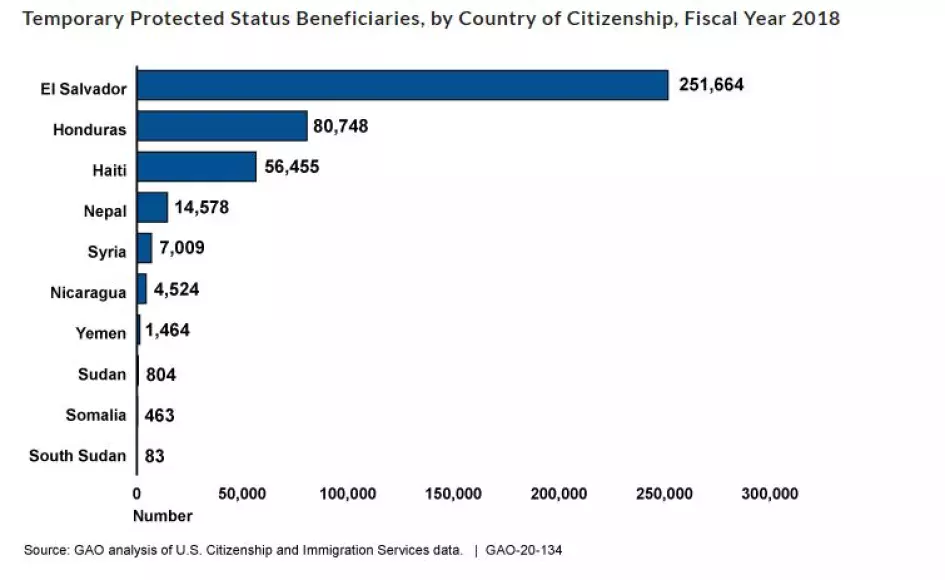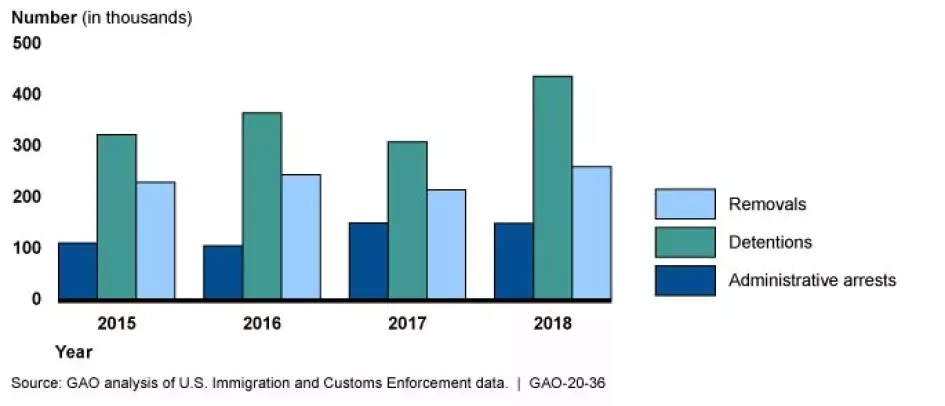U.S. Immigration Laws and Enforcement
In February, President Biden proposed immigration reform legislation that would allow some noncitizens who do not have immigration status to become permanent residents and, ultimately, citizens. Proposed legislation would also make changes to the U.S. asylum system, which provides refuge for those unable or unwilling to return to their home country for various reasons.
As the President and Congress consider immigration reform, we highlight some of our prior work on immigration benefits and enforcement programs and ways to improve them in today’s WatchBlog.
Asylum and temporary protected status
U.S. immigration law allows noncitizens to legally seek travel to or remain in the United States, including various forms of humanitarian relief or protection from removal, such as asylum and temporary protected status.
- Asylum and credible fear claims: Noncitizens may be granted asylum if they demonstrate that they cannot return to their home country because of past persecution or a well-founded fear of future persecution on protected grounds, such as race, nationality, or religion. Certain noncitizens apprehended by the Department of Homeland Security (DHS) near the border without valid travel documents may be removed from the U.S. without an immigration hearing before a judge unless they express an intent to apply for asylum, or a fear of persecution or torture. In such cases, DHS’s U.S. Citizenship and Immigration Services (USCIS) screens the "fear claims" to determine whether they are credible. In fiscal year 2018, USCIS handled about 109,000 “fear claims,” almost double the caseload in fiscal year 2014. In 2020 and 2021, we reviewed USCIS’s screening process for such “fear claims” and found that USCIS could (1) improve training for asylum officers before they begin to conduct in-person screening of noncitizen families; and (2) record and maintain reliable case data so that it can analyze information on case delays. We recommended that USCIS implement these actions.
- Temporary Protected Status: The Secretary of Homeland Security may designate a country for Temporary Protected Status if conditions, such as a civil war or a natural disaster prevent a country’s citizens from returning home safely. Temporary Protected Status permits eligible noncitizens from designated countries to stay and work in the U.S. while their status is in effect. The graphic below—from our April 2020 report—shows the number of noncitizens by country who were granted Temporary Protected Status. These countries remain designated for Temporary Protected Status along with Venezuela and Burma, which the Secretary designated in March 2021.
Image

Noncitizens granted Temporary Protected Status are authorized to work in the U.S. as long as their status lasts. However, the documents demonstrating work authorization to employers can expire. DHS gives extensions and has notified people about them in various ways, such as via notices in the Federal Register and mailed letters in some cases. But, not all of DHS’s guidance tells employers that these mailed extension letters are acceptable proof of work authorization, and some noncitizens have reportedly wrongly lost their jobs over this. As such, in a 2020 report, we recommended that USCIS update its guidance to consistently identify the ways it communicates extensions of employment authorization.
Immigration enforcement
U.S. Immigration and Customs Enforcement (ICE) conducts immigration enforcement actions, including arrests, detentions, and removals of noncitizens for violations of U.S. immigration law. In a December 2019 report, we found that the numbers of arrests, detentions, and removals of noncitizens varied during calendar years 2015 through 2018, and increased overall for the period.
Enforcement and Removal Operations Administrative Arrests, Detentions, and Removals, 2015 through 2018
Image

Noncitizens who serve in the U.S. military—such as lawful permanent residents who are eligible to enlist—may also be detained and removed from the country for reasons such as controlled substance violations or conviction of an aggravated felony. Available data indicated that approximately 250 noncitizen veterans were placed in removal proceedings from fiscal year 2013 through 2018. In June 2019, we reviewed ICE’s process for handling cases of noncitizen veterans. We found that ICE did not consistently follow its own policies for veterans, which may have resulted in removing some veterans without the level of review and approval ICE required.
For more information on the enforcement programs under DHS and our recommendations, check our reports.
- Comments on GAO’s WatchBlog? Contact blog@gao.gov.






